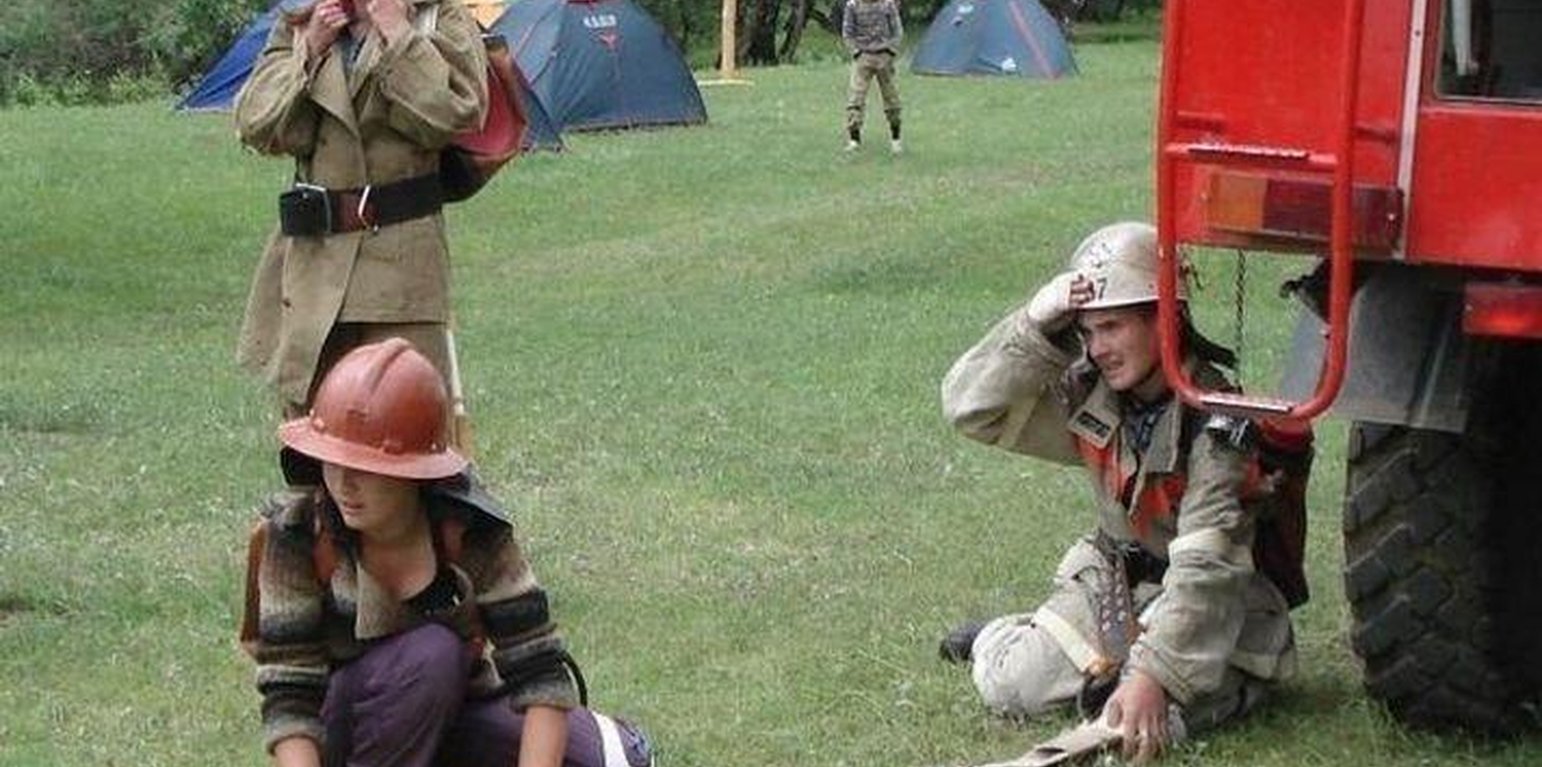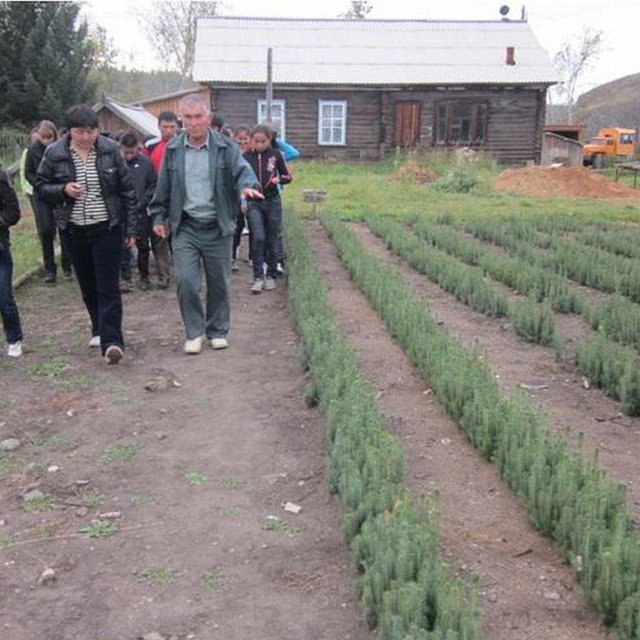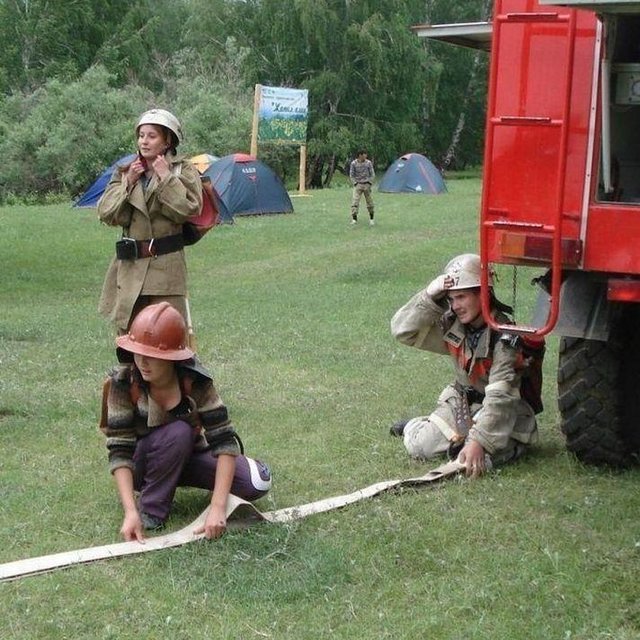



Aims / objectives: Environmental education and involvement of coming generations in the conservation of forest ecosystems and reforestation of target areas through creation of nurseries and initial training of forestry specialists. Improved study of nature and deepened knowledge in Biology, Geography, Ecology
Methods: Forestry Schools are a tradition of the Soviet period. Relevant factors of negative impact on the fragile forest ecosystems in East Kazakhstan (fires, pests, illegal cutting) have necessitated the involvement of young people in forest protection activities. In the Katon-Karagay district 4 school ranger stations were created based on five secondary schools. The scholars are the members them. School ranger stations are self-governing organizations and the responsibilities are distributed among its members as it is distributed in any other establishments of forestry. One elected scholar-forester and a council which consists of 6-8 of the most active and experienced pupils, lead all activities. School teachers and foresters supervise their work but they are not members of School ranger stations. The most active school ranger station is the 'Cedar' in Uryl villlage. The main activity is to educate school children with the basics of forestry, monitoring, the practices of tree nurseries and protection of trees in the forests, the participation of school children in the state program 'Green Country’ and in national and international conferences and gatherings. The legal framework of land ownership ensures the sustainability of the approach on the state level and facilitates the implementation of this approach
Stages of implementation: 1.The initiative was taken by the administration of Berel Forestry Unit, the department on environmental awareness raising and education of Katon-Karagay national park and the director of the Uryl Secondary School. 2. Cooperation to discuss and agree on the role of the parties. 3. Agreement on Cooperation between the Office of the Katon-Karagay national park, Uryl secondary school and youth social organization 'Eco-tourism center'. 4. Training seminars for coaches and pupils of 'Cedar' school. 5. Distribution of approach and creation of 3 similiar schools in Katon-Karagay distric
Role of stakeholders: Secondary school: environmental education, methodical gathering, information on Forestry and Earth sciences, preparing school children for national and international competitions and conferences. Katon-Karagay national park and forestry: tools, vehicles, plants, theoretical and practical work with school professionals, the cost of participation in competitions and conferences. Local authorities: institutional support. 'Forest Conservation and Reforestation' project: additional information, laboratory&reagents, tools, uniform for scholars, trainings. 'Conservation and Sustainable Use of Biodiversity of Kazakhstan part of Altai-Sayan Ecoregion'project: information support, seminars and assistance in the production of Conference Proceedings. Local community: all kinds of support

Location: Katon-Karagay/Uryl village, Kazakhstan/East-Kazakhstan, Kazakhstan
Initiation date: 2004
Year of termination: n.a.
Type of Approach

| What stakeholders / implementing bodies were involved in the Approach? | Specify stakeholders | Describe roles of stakeholders |
| SLM specialists/ agricultural advisers | Specialists of the Berel Forestry Unit | Schoolchildren of all social groups regardless of economic, gender, ethnic and religious relation are involved |
| teachers/ school children/ students | Schoolchildren (12-16 years old), teachers of secondary school | |
| national government (planners, decision-makers) | Berel Forestry Unit and administration of Katon-Karagay National Park, secondary school of Uryl village | |
| Specialists of the “Forest Conservation and Expansion of Forest Area on the Territory of the Republic“ Project of the Forestry and Hunting Committee of MA RK with the support of the World Bank (Doctor of Biological Sciences Yermek Zhumabayev) and Government of RK/GEF/UNDP |
Organigram of the role of various parties in the creation and functioning of school forestries in the Katon-Karagai district of the East Kazakhstan region of Kazakhstan

Decisions were taken by
Decisions were made based on
Dr.Yermek Zhumabayev - training of teachers of Uryl forest school on accelerated growing of standard seedlings trees (spruce, larch, pine and fir trees); A.Dzhumagulova - pedagogical studies on environmental education; Renat Yeskazyuly - study of opportunities for tourism development and raising of awareness of environmental issues in the region.
Research was carried out both on station and on-farm
Labour by land users was
Successful activity of educational ranger stations in the field of raising environmental awareness and education has drawn the attention of both state development programs and international projects that has led to the improvement of the material, technical, informational and research base allowing
The approach has other specifics, though the administration of Katon-Karagay National Park initiated the support for children from low-income families.
The approach was shared through creation and involvement of 3 other forest schools in Katon-Karagay district - 'Or Altai', 'Ular' (since 2006 on the basis of the nursery of Medvedskiy forestry unit), 'Zheruyik' (since 2008 on the basis of Zhambyl secondary school). As a whole, more than 20 educational ranger stations have been created and are functioning in East-Kazakhstan region on the basis of: Katon-Karagay State National Park, 'Semey Ormany' West-Altai Nature Reserve.